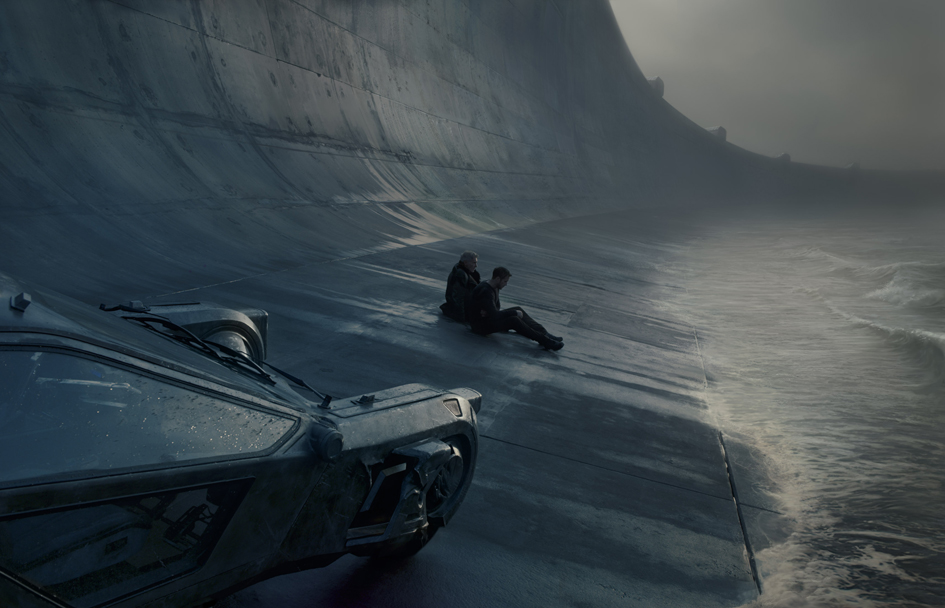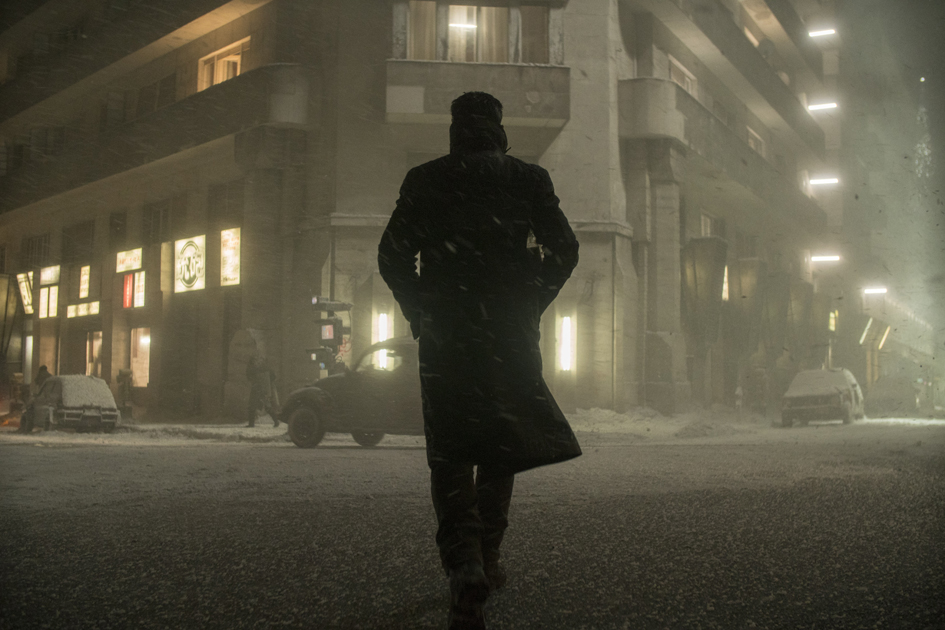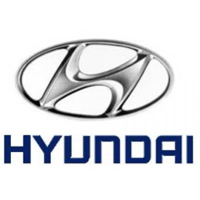Article by John Grafman
2018 Academy Award Winner for Visual Effects and Cinematography!
Unless you’ve been living under a rock for the past three decades or so, you’ve seen Blade Runner.
The new release is transporting us to 2049. The studio synopsis is – Thirty years after the events of the first film, a new blade runner, LAPD Officer K (Ryan Gosling), unearths a long-buried secret that has the potential to plunge what’s left of society into chaos. K’s discovery leads him on a quest to find Rick Deckard (Harrison Ford), a former LAPD blade runner who has been missing for 30 years.
What the studio doesn’t mention is, this is an epic film, using a big canvas to explore our imaginations. In 2049, the world continues to evolve and the visuals express some of the deepest concerns we currently have, yet the film doesn’t take a stand on those. This is like a western shot in barren lands. There is an acceptance of the surrounding, and no explanation is necessary.
This does question our ideas and ethics as humans, but it sort of gets lost in the plot. To really extract the visuals, storyline, and undercurrents, Blade Runner 2049 should be seen a few times. But, at over 2.5 hours of running time, it can be difficult to just squeeze that into one’s schedule.
Spectacular scenes are the byproduct of the futuristic landscapes. And, the environment, just as it does today, impacts everything else. This is truly panoramic, and if there’s one movie that should be seen on a big screen in a theater, this is it. This is especially true to enjoy the scale and darker parts of the movie.
The transportation in this movie is an offshoot of the original, and feels right at home. These clearly lean towards purposeful, and away from highly stylized products we see today. All functionality, with only a nod to what consumers relish today.
On the eve of the release of Blade Runner 2049, Visual Futurist Syd Mead shares his thought with AutoDesignO in this exclusive conversation. Syd provides his insight on Blade Runner, transportation, technology, and what’s around the next corner.
Syd Mead’s touch is seen on the big screen in blockbusters Aliens, Tron, and of course Blade Runner. While he’s an octogenarian, never count Syd out. As you will see, he’s got more ideas up his sleeve and knowledge roaming around in his head than those half his age.
On Blade Runner
Syd Mead: I’ve seen the long trailers. Very elaborate and the movie seems to be sort of the same mysterious, vaporous atmosphere that the original Blade Runner had. I mean, Ridley Scott’s the executive producer and Denny (Denis Villanueva) is a great guy. What a wonderful end.
It looks to me like they did keep part of the spinner design idea. The reason I designed the spinner originally with the two wheels up front is that you’re driving this thing and you’re taking off and landing, so you know, it looks like a helicopter. It had glass plates on the floor.
It looks to me … the back of the new spinner, if you can call it that, it has a slanted cut-off back, which is very nice. I think the front projections are similar out in front of the body. Gene Winfield built all the vehicles, for the first Blade Runner. Cool guy. One of the country’s best metal benders, as we call them. So I’ll be very excited to see it. Tomorrow, we’re gonna see the premier at the Dolby Theater, and I’m looking forward to seeing it because it’s 37 years ago when the original one was made.
There are people now that have gone to college, got married, and had kids that have never seen the original one. You have a demographic that supposedly has not seen the original “Blade Runner”, unless they’re real die-hard, see it over and over and over, fans. It has to stand-alone. And the fact the press being who they are keeps referring or they kept saying “Blade Runner 2”. It’s not “Blade Runner 2”. I read the script. The one character that’s the same is the one played by Deckard. This time he’s being hunted and he’s not the hunter anymore. Ryan Gosling is the hunter. That’s different.
Apparently Harrison Ford said that’s the best script he’d read in a long time and he hated the original “Blade Runner” cause he’d just come off Raiders, and he was the hero from [Star Wars], Hans Solo, and he got the crap beat out of him by Rutger Hauer’s character. Fans didn’t like that either. He didn’t like it. Then they made him do that voiceover, which was stupid. To him, I guess maybe he thought, “Well, I guess my acting ability isn’t good enough anymore.” He would not do interviews about the original Blade Runner for quite a long time. He made a comment. Somebody said, “Well, what was your impression of working with Ridley?” He said, “He was a bitch.” That’s all he’d say. [laughter]
Cars. Transportation. The Spinner was called that in the original book ‘Do Androids Dream Of Electric Sheep?’ That wasn’t something anybody made up. They were called Spinners. I don’t know how this [compares with the] original one … I read the script, but I don’t know exactly how the morality vector [is], cause it was quite large in the original movie. You had almost a messianic image of Rutger Hauer’s character, Batty, with a nail through his hands saving Deckard from falling.
Interesting thing. Optical perspective in movies. I was doing the preliminary mat shots for the original Blade Runner. Ridley says, “Now, we have the shot where Deckard almost makes it. He’s hanging off the end of this beam.” And he said, “We’re gonna pull focus right down on him.” But he said, “Not too far. Because,” he said, “if it’s too far up, people don’t get scared.” So he said, “Figure out maybe a maximum of ten floors because of the way the cameras work in the movie business.” But the chance, and I’ll call it a chance, to work on the first Blade Runner was wonderful because I had only worked on one movie before that which is post-production Star Trek, The Motion Picture.
Blade Runner was the first movie I had worked on from pre-production to post-production. Then I was working on Tron at the same time. People say, “Why, Mr. Mead, do you think you have such a dystopian view of the future?” I said, “Okay, here we go. Here’s a script that Ridley approved from a story written by Philip K. Dick, who wasn’t a particularly happy man to begin with.” I said, “It has nothing to do with my personal point of view at all. I was hired to do a professional job so I did.” I could have worked on Mary Poppins and the same. It didn’t matter.
When Cars Fly
Transportation is fascinating in conjunction with the spinner, the old one or the new one. “Mr. Mead, why do you think we don’t have flying cars yet?” “Okay, here’s why. The air space over any major metropolitan city is already jammed with news helicopters, police helicopters, and sheriff helicopters. They all have to clear their flight plans.” I said, “Imagine 1000’s of people with their own little flying car going to work or shopping. All on automatic control and something goes wrong or the system is hacked. Okay. Here we go. Here you have these things crashing down through opposing air lanes.” I said, “It’d be a nightmare. It’d be the scariest thing you ever saw.” I said, “This flying car is so far mostly fan driven, either ducted fan or fan in an open enclosures, you know, for the safety thing.”
And I said, “That’s not terribly efficient for large loads.” I said, “The spinner that I worked on in Blade Runner was a pretense. It’s a movie. I pretended that we had a very robust source of thrust power,” which is similar to the F-35, where the English one, the Harriet Jump Jet, which had a basic design flaw but we won’t go into that. I thought it was an aerodyne. It keeps its shape whether it’s going or coming. It’s all internal generated thrust. And I said, “The car’s going to be a character in the movie, in the story. And it should not change, have wings that pop out or blades that go around. It should look all the same.” That’s my theory. And I think the new one probably does the same thing. You can assume pretty elaborate engineering extensions if you use something as a basis to make it reasonably logical for that particular story.
And Deckard’s sedan on the original movie that I worked on was essentially a stripped and de-licensed aerial limo. So you take off laminar flow panels to control it. You put on a street package for impact and lights and anti-theft and all that. This way, it looks so funky. But it did look like it was supposed to look that way; I guess that’s the trick. To make it look like it should be that way.
A lot of the movie cars, I think they lose that link to … well, it probably should look that way like it un-favors “Back to the Future” DeLorean. This looks like something came into the studio lot one afternoon and [someone] said, “Okay, we got this old truck load of parts. Just glue them and weld them on. We don’t care. We’re shooting tomorrow.” I don’t have time.
The Future Of Transportation
Transportation in general goes where the money is. You’re not gonna make something nobody’s going to buy. That’s called a hobby. And the business of business is to stay in business, essentially. The big auto juggernauts, GM and Chrysler and Ford, they sample what they think is the public mood and come up with something they think is gonna sell. And it’s the biggest gamble in the world. It dwarfs the movie industries finances. A new engine. New body stampings and all that. I think the future of transportation for the average person is going to be leasing and might be a vehicle that’s owned by an overall service. Let’s say Uber and Lyft take those a couple steps further. Self-driving. You lease your account, so there’s no cash changes hands, which is a big factor.
I think there is always going to be a private automobile. People like to have something that’s theirs. Nobody else uses it. It sits in the driveway like ours do for a week at a time. Nobody starts it up. My old Imperial, 72 Imperial, now it’s all the way up to 12,098 miles. I literally haven’t gone out and started it for a month.
I know it’ll start. And it idles and all that perfectly. But mechanically, it’s not very old. It still has to be maintained because its rubber dries out and seals and all that. But I think there will be private automobiles and I think, let’s take it one step further into the future, whatever. How far into the future we want to go? I think they’ll actually be theme parks so people with normal cars can number one, buy gasoline – which is gonna go off the charts, can drive their car in a simulated city or countryside. I know that’s gonna happen. As sure as I’m sitting here.
AutoDesignO: You bring up a very good point, which is just like your car, taken care of, it’ll last a long time. By the time the year 2049 comes around, the cars we see today, many of them will still be out there on the road.
Syd Mead: Yes, Yeah. In fact, you’ll have to have a transponder put in your car once we get this thing ramped up, and cars are talking to each other and so forth, and platooning, you know, to cut the headway between cars. You’re gonna have to have a transponder that says, “Hey, everybody, all the other cars, I’m not like you.”
I know that’s going to happen too. It has to. Otherwise, the whole thing doesn’t make sense.
Our World And More
AutoDesignO: The environment, the culture, and everything else, change as you move forward. How do you see some of that impacting vehicle design?
Syd Mead: Well, this movie, Blade Runner 2049, having seen the trailer, it’s a dry … what they’re doing, they’re paying homage to the current scare of everything’s drying up. No water. It gets too hot. That’s an homage to what people are being led to think. You just go along with it cause it looks rational based on what your lay audience thinks is going to happen. I don’t think it’s gonna happen. But then that … The environment is a closed system. It has entropy, eventually. But it’s a closed system on this planet and what is here is here. We maybe start bringing in raw materials from the moon or asteroids that we capture and so forth. The dream in the far, far future is that earth will go back to being a garden and all the manufacturing will be done on the moon. That’s one notion. And all the open pit mines will be changed into skateboard parks or something. I don’t know.
AutoDesignO: Not a bad idea [skateboard parks].
Syd Mead: There are places on this planet that are absolutely, unbelievably fantastic just as terrain. Then you go into the animal kingdom and all. The nature is your biggest competitor when you’re trying to do creatures for film. I get these things from kids where I see their portfolios and they all want to do creatures. I don’t know why. I have no idea. They’re not trained for it. You have to be able to … you have to be aware of what real weird, weird creatures look like first. Then you can extemporize and caricature.
They want to do multi-leg, human like things, or the Star Trek familiar mask make-up thing of creases in the forehead. It only goes so far. Computer graphics with the elaborate armature and the articulation controls and all that is really very, very advanced. I’m gonna be seeing some of the people, the VES society, at the end of October.
VES. Visual Effects Society. I was awarded an honorary membership. I said, “You guys make some movies entertaining that should never be made, first of all. It would be wonderful to work on a story that’s not really dumb.” But I said, “It’s a job.” I said, “I did for years architectural renderings for architects, interiors and exteriors. Some of these things were unbelievably horrendous, but I rendered them impeccably photographically.” I was the only one that did it to the extent that I did. You know, it’s a job. Then you move on to the next one. You got to pay the mortgage and buy the Mercedes and feed the wife and kids.
AutoDesignO: Well, I think in another two years, they’re anticipating getting the new, well the replacement for the Hubble telescope [the James Webb Space Telescope].
Syd Mead: Yes.
AutoDesignO: As mind blowing as that all is …
Syd Mead: How are we going to get that up there? We don’t have a shuttle anymore.
AutoDesignO: Yeah. Good question. But they expect to be able to see even further and more worlds and so forth. Who knows what we’re going to find and it’s going to open up maybe some of our thinking on to …
New Technology
Syd Mead: Well, there’s a hush-hush theory. I’m not going to say it’s true. Maybe I’m reading the wrong stuff or being tempted and teased by the internet. We’re supposed to have technology that is so far beyond what everybody thinks we have that it’s ridiculous. Interstellar travel is absolutely possible. We’ve conquered the whole idea of gravity, which is essentially electrical. Electromagnetic. The universe is a soup of particles rushing back and forth. Tesla figured that out. That’s why his free power thing came about cause he was harnessing this energy interchange that’s going on all the time. Through us. Through the earth. Some of these particles go through the earth and not even slow down.
One of the mysterious ones is tachyon. Einstein’s theory was that the faster and faster you get as you approach the speed of light, your effective mass gets more and more and more. Finally, you need infinite power to go infinite distance. Tesla had a formula for trans Lumiere travel. I don’t know if he knew about tachyons or not. The tachyon, the slowest it can go is the speed of light. It’s mass shrinks. It’s just exactly the opposite of what Einstein’s classic theory is. There you have it.
The TR-3B, the triangular space craft, or craft that we have, floats. It’s about 600 feet on a side. Big triangle. It has a rotating Taurus of something that resembles Mercury – electrically conductive. It’s going around at, I don’t know, 20,000 RPM’s under pressure. And essentially what this does is it bends the local gravity field and allows that thing to float. It removes about 96 or 97% of the mass of the vehicle. From then on, it’s easy to push it anywhere you want.
The weather satellite goes around the world, takes a picture every minute or something like that. There’s a step, step, step, phase. They put it all together on the weather channel. They were reviewing some of these tapes. They saw this thing, whatever it is, leave Area 51, cause there it is. It’s Nevada. You know exactly where it is. It was going across the United States, out over Quebec and over the outer end of the Atlantic. Because of the step frame break, and it was here then. Now it’s there. Now it’s there. Now it’s there. It was going about 8,000 miles an hour. We already have proof of some very hypersonic vehicles and they haven’t announced. We’ll see.
Transportation, in general, is fascinating. I’ll be giving a presentation to an event here in Pasadena. The premise is, and this you can describe any stage in human existence, technologically and economically and socially by three statements. The first one is where we live. The second one is where we go. The third one is how we get there. Each of those has subsets. But essentially, that’s it. That wraps the whole thing up. From cave to space station from walking on foot to going 18,000 miles an hour.
Visiting the moon. The whole theory of transport from A to B is definitive of any technological phase in human development. Of course, it’s not gonna stop. Because all of these people are working on different solutions, your choice range gets bigger, not smaller.
A Personal Choice
The next thing that controls it is the social acceptance or rejection of different ideas for what constitutes transportation. The car is still the transport system of choice, worldwide, if you can afford one. Now the Tata, the Indian Company who’s going to make a Nano. The Spanish word for nothing is nada. This was … It really was almost nada. It was going to be the minimum, minimum little car. Four seats, unbelievably, and was supposed to sell for about 2,000 US dollars, equivalent, or less.
The car is the transportation system of choice. Much to the dismay of the anointed, who want you to get rid of your car, buy a bicycle, learn to walk more and take the train. The limitation of both light-rail and bus, the linear systems, you can only stop so many times, otherwise it doesn’t make it worthwhile at all. You have to board or get off at where the train stops. That means that you’re last mile, or more than that, to the train station, then the last mile from the train station to where you actually want to go, that’s the hang-up.
So what we have to do is have UBERs waiting all over this country for taking…
The automobile allows you to change your mind, en-route. Think, “Oh, damn. I forgot, we have to go by the drug store.” So you loop around, stop in at CVS…
AutoDesignO: I don’t know. Well, one of the things that, in the movie and in real-life, that we’re starting to see is an increase in density amongst population, which goes to your point that light-rail is linear. But now we’re making more difficult for personal transportation. How are we going to get anywhere in the future?
Syd Mead: That’s it! Here in Pasadena. There … In most cities are, or have already or are doing it, maximum build out. Every square yard of property is a multi-rise apartment building. That brings in more taxes for that particular city, because people are buying stuff locally.
But, at the same time, you have this traffic quieting mania, which says we got to narrow the streets, make it more difficult for people to use their cars because we don’t like them anymore and they’re really bad, bad … Cars are actually much, much better [than they ever were before].
AutoDesignO: Well, I hope that we learn something from the past, so in the future we have a better world to live in.



































